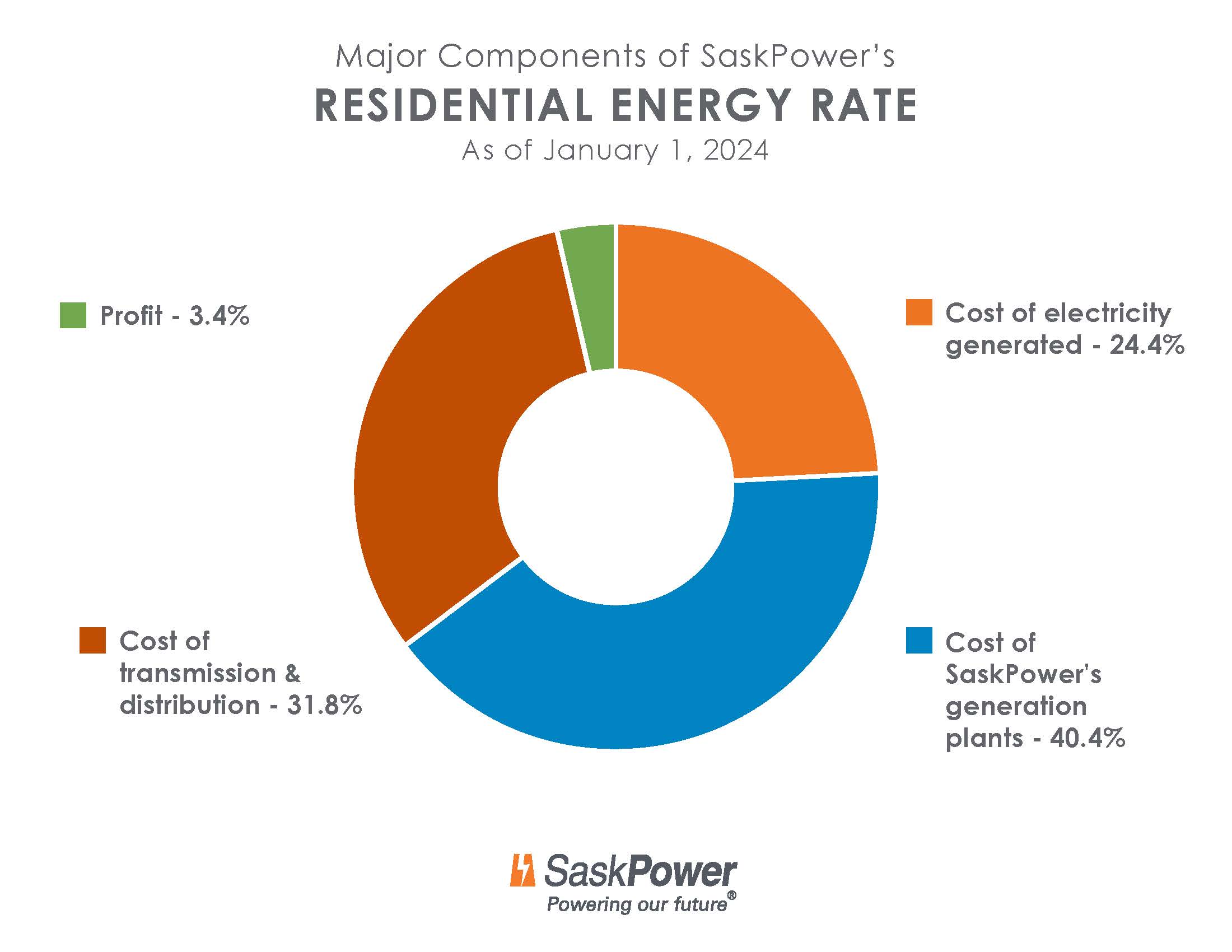
There’s a lot to know before deciding if net metering is right for you.
Check out some key considerations below before moving forward.
Understand the Residential Energy Rate
When you use power from our grid, you’ll be charged the rate for your customer class (residential, farm, etc.). These class rates are different than the net metering rate that you’ll receive for your excess power generation.
Your rate class covers additional costs including grid infrastructure and maintenance to ensure reliable power is available for all customers.
Cost of Electricity Generated
The cost to operate our power stations and infrastructure is primarily based on the cost of fuel. The cost of fuel varies over time depending on the source that’s used.
Cost of Our Power Stations
This is a fixed cost that supports the building, operation and maintenance of our power stations and facilities. The power generated is used as back-up power for net metering customers.
Cost of Delivering Power to You
We need to deliver power to your home through our power lines and poles from across the province.
Profit
A small part of the overall rate goes towards profit. This allows us to keep our business operating so we can continue to provide you power.
How to Read Your Bill
View a net metering bill to see how it displays.
Understanding the System
Knowing how your system works will help ensure you have the proper set up now and into the future.
Since renewable power can’t be easily stored, it must be used in real-time.
Any power your system can’t use, will be sent to our grid. You’ll then receive a credit. If your system isn’t generating power to meet your needs, your power will come from our grid to ensure you always have power when you need it.
First, you’ll want to track your monthly power use. You can do this by logging in or signing up for MySaskPower. Using this information, work with your vendor to determine the size and cost of a system. The maximum size a system can be is 100 kilowatts (kW).
We suggest that you analyze when you use the most power. This includes both time of day and time of year and be sure to factor this in. Also, consider future power use and needs when determining the size of your system (i.e. electric vehicles).
Make sure you consider the following and work with an expert where appropriate:
- Cost of installation for solar panels and other renewable sources
- Lifespan, solar panel maintenance and other upkeep of equipment
- Feasibility of the project for your property
- Condition of building structure
- Shingles
- Obstructions (ie. chimneys, roof vents, power lines)
- Pitch of roof
- Extra home insurance
- Applicable grants or incentives
- Getting multiple quotes
- Have an interconnection study done with a quote from us before buying any equipment
- Verify that the information you’ve been provided with aligns with the existing SaskPower net metering program. If you’re not sure, please email us.
Using a storage system like a battery or powerwall allows you to store extra power you generate. You can use that power when your solar system isn’t producing or during an outage. A vendor who offers storage solutions is the best place to get more information.
When your home is more efficient, you’ll get the most from your system. We recommend exploring our tools and resources before installing your system:
Environmental Factors
Weather can impact your power use and generation. For example, if you have a solar power system, Saskatchewan’s dark, snowy winters could impact your power use and generation.
During winter, the demand for power is highest between 5 and 9 pm. That could result in less credits for generation and increase your power use from our grid.
Solar panel performance will also vary based on the direction and slope of your roof and how its impacted by sun and snow at different times of the year.
Understanding the Impacts of Outages
During a power outage, your system would shut down. For backup power, consider a storage system.


